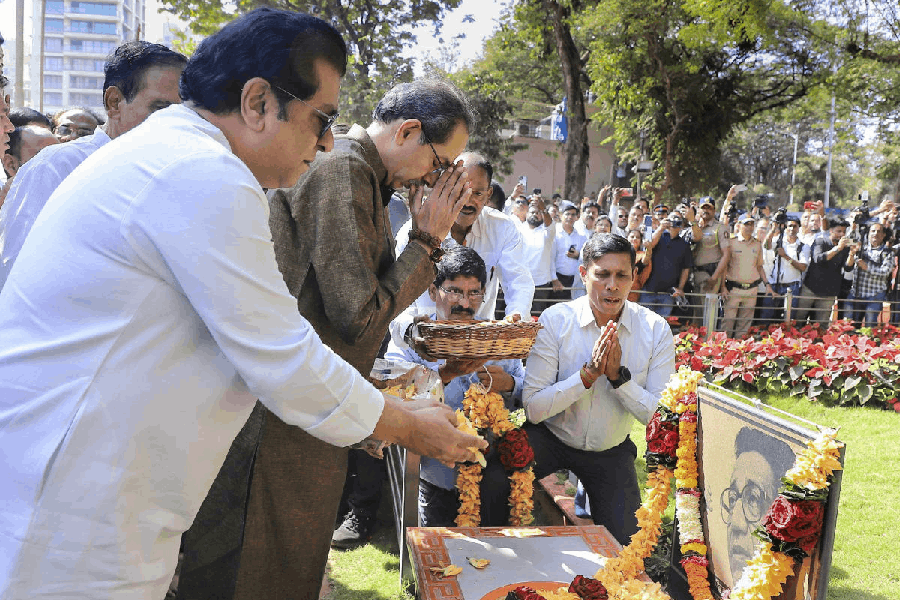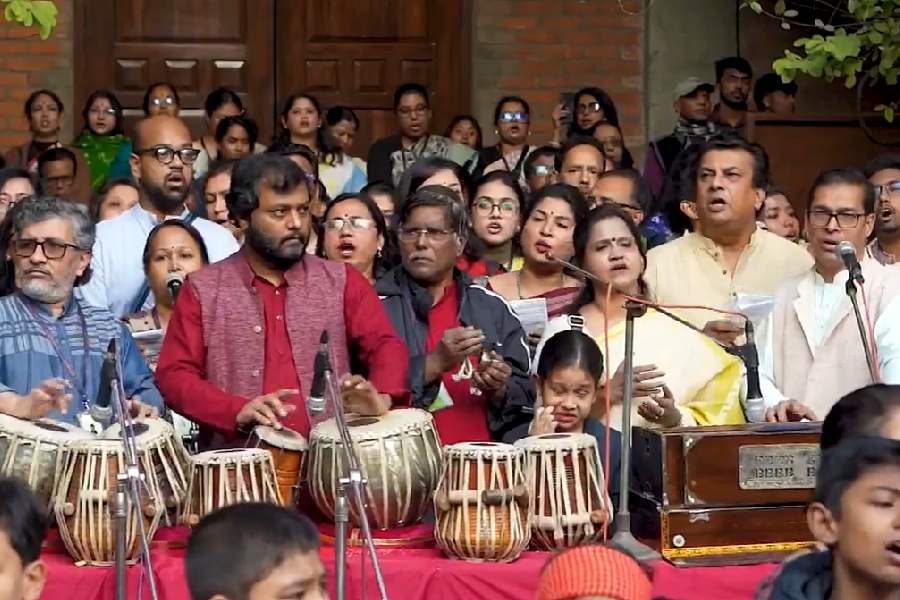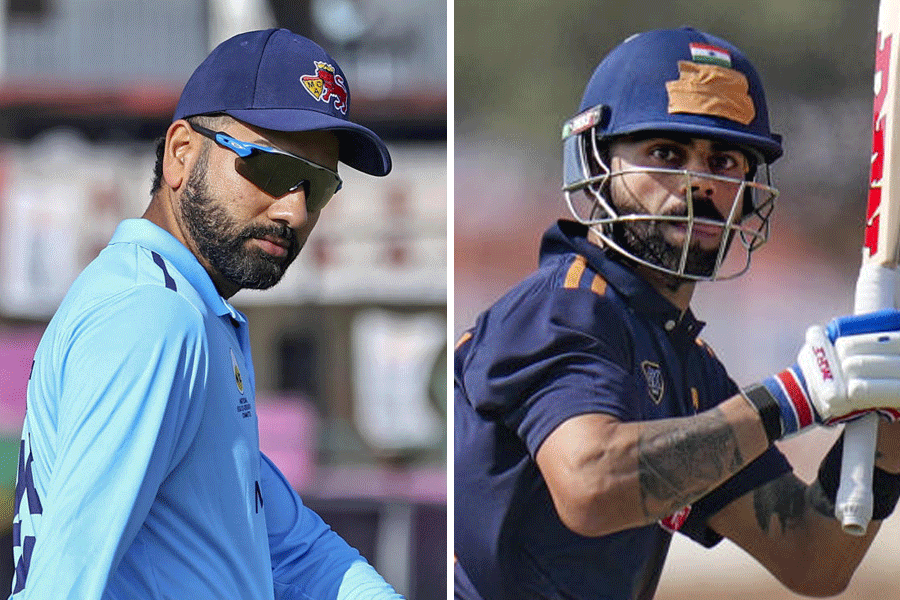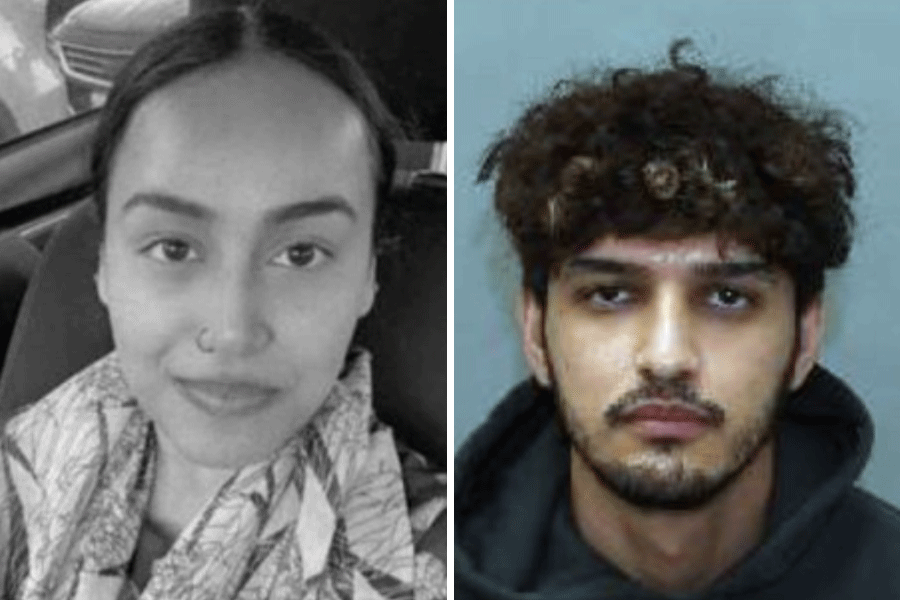Police in BJP-ruled Haryana on Tuesday used “air power” on protesting farmers trying to breach the multi-level fortification at the Shambhu border near Ambala, deploying drones to drop teargas shells to prevent them from proceeding towards Delhi.
The tactic, often used by Israel on Palestinians, and other strongarm measures resulted in scuffles that left over 60 farmers injured and forced them to call for a temporary “ceasefire” in the evening.
The government continued to press for talks, with Union agriculture minister Arjun Munda telling PTI that a law guaranteeing minimum support price (MSP) for all crops cannot be brought in a hurry without consulting all stakeholders. However, the protesting farmers pointed out that the government had set up an MSP committee in 2022 as part of the assurances given to the farmers after their year-long agitation, but nothing much came of it.
The decision to press the pause button on their march to Delhi was taken by the farm union leaders in the evening after about 60 of the protesters were injured in the firing of teargas shells and rubber bullets. Some police personnel were also injured in the melee at the Shambhu border amid reports of stone-pelting by farmers in response to the teargas shelling.
Several videos posted on social media showed thick clouds of teargas being used to disperse the protesters even as the farmers attempted to minimise the impact of the shells by covering them with jute bags and wet cloth.
A former Intelligence Bureau official condemned the use of drones to remotely launch teargas shells to stop the farmers from entering Delhi. “This is the first time I have seen police using drones to drop teargas canisters on peaceful protesters. Are we no longer a democracy?” he wondered, pointing out that Israel often uses drones to drop teargas grenades on Palestinians to quell rioting. “It seems we are now adopting the Israel model of governance.”
A security official attached to the Union home ministry said the Haryana police had procured the aerial vehicles — drone-based teargas launchers — last year to control riots. “These drones carry several rounds of teargas shells, fly over mobs and fire the shells based on the commands given by the operator,” he said, adding that these drones can deliver teargas shells with precision. “These drone-based teargas launchers can also be used to spray ink on rioters, which later helps the police to identify them easily,” the security official said. Some farmers claimed that ink was also sprayed on them.
At the Khanauri border near Haryana’s Jind, the confrontation between Punjab farmers and the Haryana police escalated when some of the youngsters among the protesters broke barricades at the Ghaggar river bridge, prompting the cops to fire teargas and use water cannons. The protesters claimed that a farmer was injured in the firing of teargas shells. The police also resorted to lathi-charge on Punjab farmers at the Khanauri border in which several peasants suffered injuries. Some farmers were detained too.
A blockade of metal spikes, cement and steel barricades has been set up on the highways from three surrounding states — Haryana, Punjab and Uttar Pradesh — leading to Delhi.
A Haryana police officer said sand-laden dumpers, cranes, barricades, drones and barbed wires, along with a large posse of policemen in anti-rioting gear, were on stand-by on the Gurgaon-Delhi border on NH48 to block any possible attempt by farmers to move towards Delhi. The state’s borders with Punjab have been fortified in Ambala, Jind, Fatehabad, Kurukshetra and Sirsa with concrete blocks, iron nails and barbed wires.
The Delhi police have also deployed thousands of personnel along the borders with neighbouring states, besides fortifying the perimeters with concrete blocks, road-spike barriers and barbed wire.
Traffic jams and disruptions were reported across the capital on Tuesday as the police blocked roads and diverted traffic. The police have also prohibited large gatherings in the city, including at border points between the capital and neighbouring Uttar Pradesh and Haryana through which the farmers are expected to reach Delhi.
The Red Fort complex has been temporarily closed for visitors due to security reasons amid a massive deployment of police and paramilitary forces in central Delhi. The police said the closure was expected to remain in place until security agencies deemed it safe to reopen.
Earlier in the day, the Delhi government turned down a proposal from the central government to set up a temporary “jail” for farmers at the Bawana stadium. Of the view that the farmers’ demands are genuine, Delhi home minister Kailash Gahlot said every citizen had the right to protest peacefully, “it is, therefore, incorrect to arrest the farmers”.











